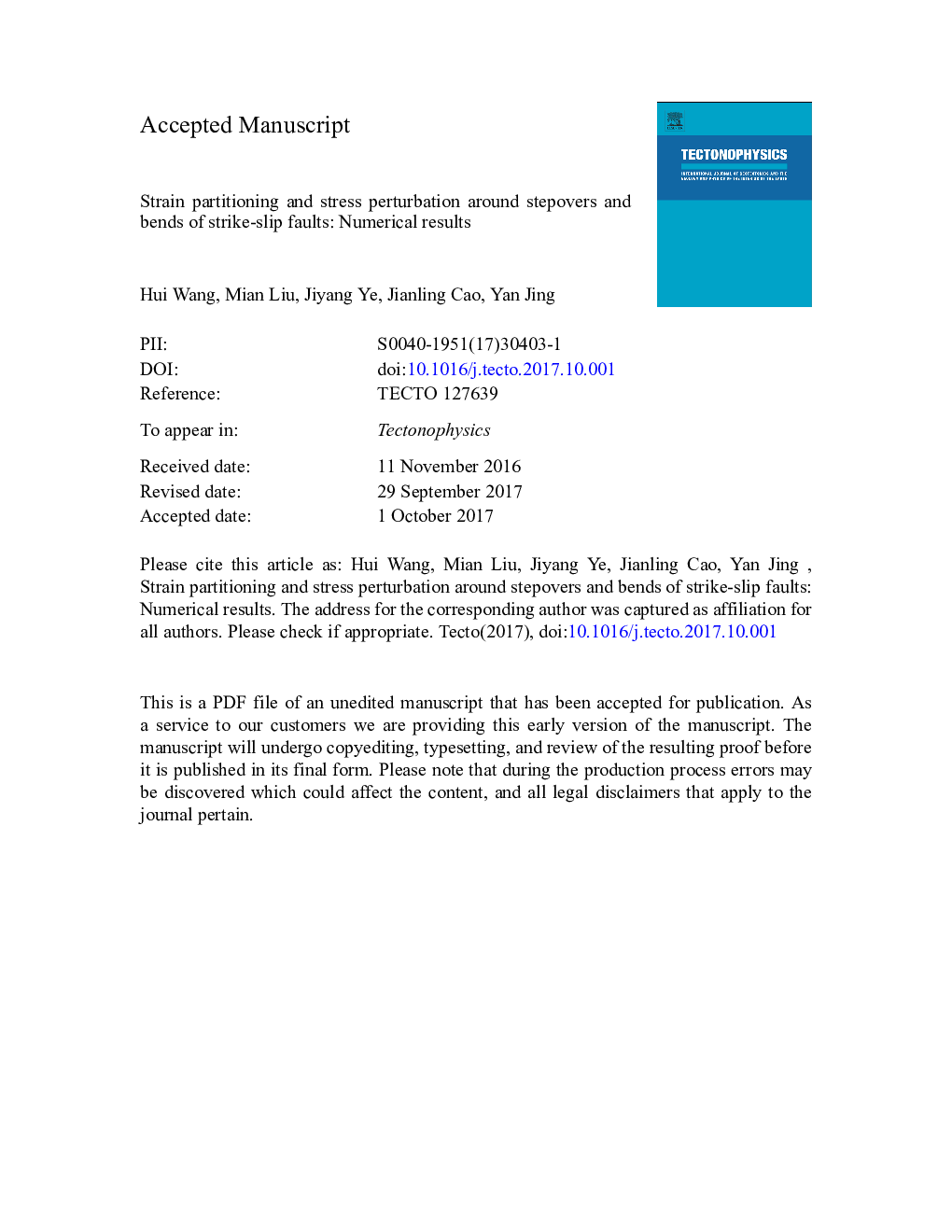| Article ID | Journal | Published Year | Pages | File Type |
|---|---|---|---|---|
| 5781448 | Tectonophysics | 2017 | 50 Pages |
Abstract
Stepovers and bends along strike-slip faults are where push-up ranges and pull-apart basins are formed. They are also commonly where fault ruptures terminate. Field study and analogue models suggest that the configuration of faults plays a key role in crustal deformation around bends and stepovers, but the related mechanics of stress perturbation, strain partitioning, and fault evolution remains poorly understood. Here we present results of systematical mechanical models of stress changes and strain partitioning around simple stepovers and bends, using three-dimensional viscoelasto-plastic finite element code. Our model predicts elevated deviatoric stress around all stepovers and bends, with higher stresses around the restraining ones. Narrow stepovers localize strain between the fault gaps to form connecting faults, whereas wide stepovers localize strain on the tips of fault segments so the stepovers may evolve into subparallel faults. We explored how various configurations of stepovers and bends change the stress field and strain distribution, and show that these results can help explain some key differences between the pull-apart basins in the Dead Sea Trough and Death Valley, and the push-up ranges along the San Andreas Fault.
Related Topics
Physical Sciences and Engineering
Earth and Planetary Sciences
Earth-Surface Processes
Authors
Hui Wang, Mian Liu, Jiyang Ye, Jianling Cao, Yan Jing,
